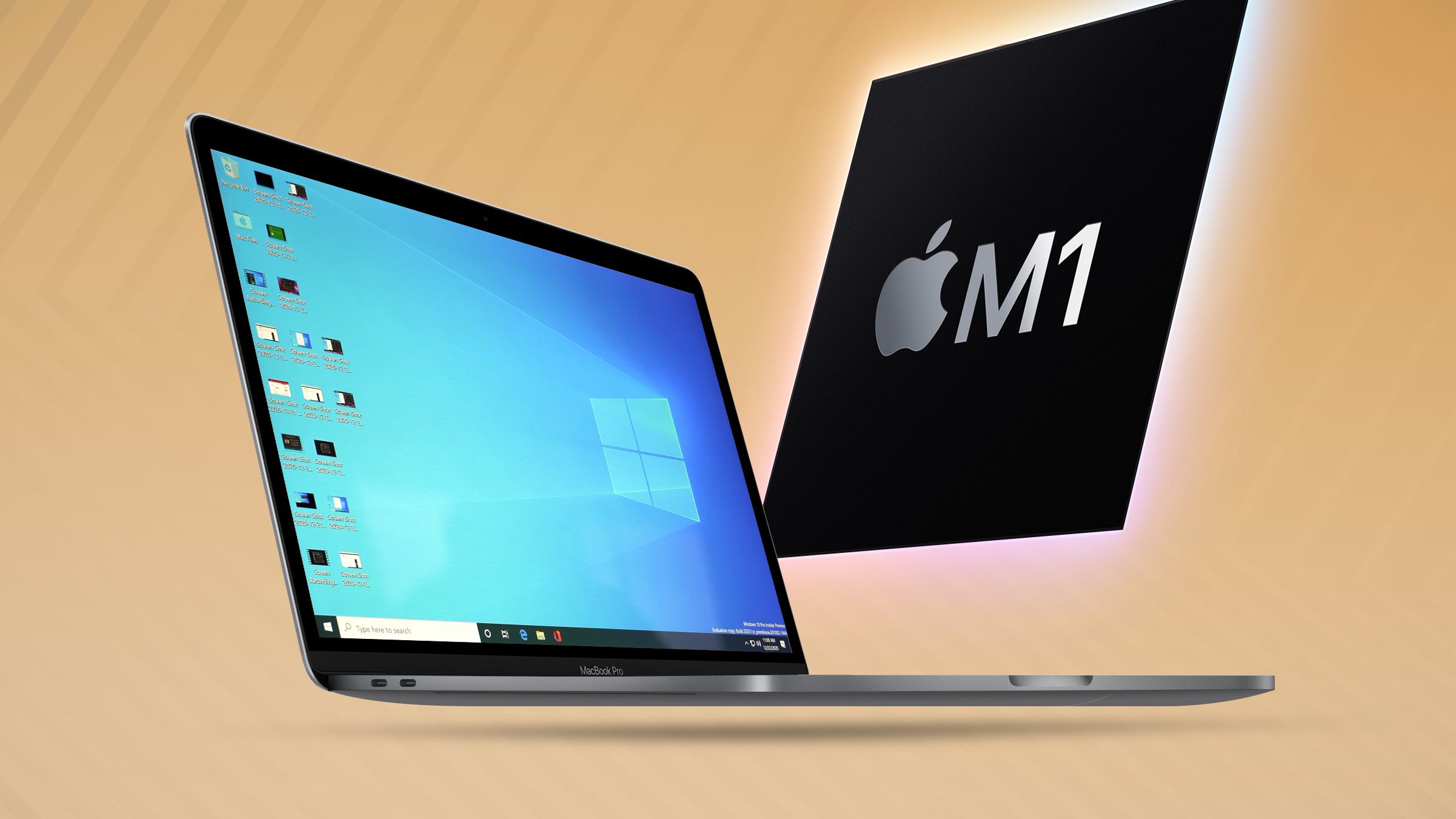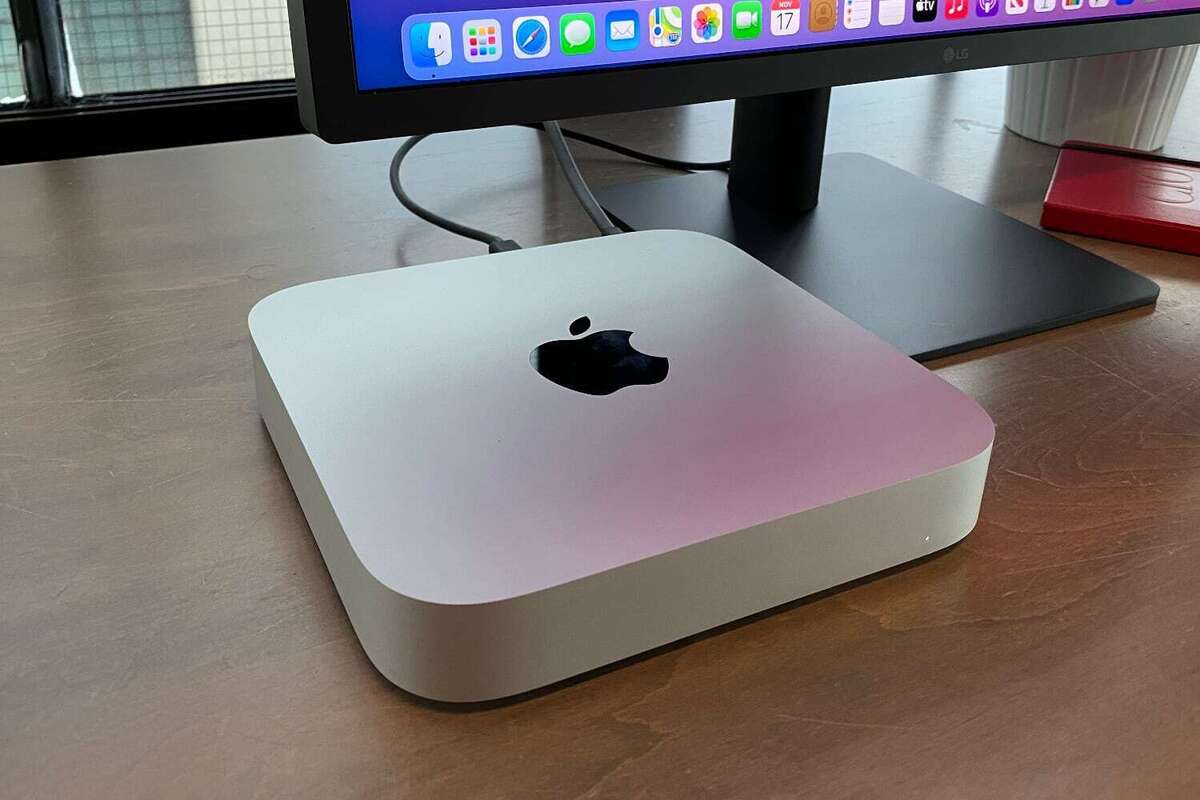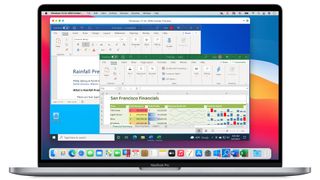Parallels Desktop For Mac With Apple M1
Parallels has announced that version 16.5 of its virtualization software, Parallels Desktop for Mac, is now generally available, bringing with it native support for Apple's new M1 chipset. Ever since Apple announced its first Macs powered by in-house ARM processors, more and more companies have had to update their apps to run natively on they new silicon, since Intel-based apps have to be emulated, this resulting in some performance overhead.
The benefits of native support should be especially evident in Parallels Desktop, since virtualization software tends to use a significant amount of hardware resources. In fact, that's why Parallels prioritized adding native support for the M1 chip, as Nick Dobrovolskiy, Senior Vice President of Engineering and Support, says:
- Up to 250 percent less energy used: On a Mac with an Apple M1 chip, Parallels Desktop 16.5 uses 2.5 times less energy than on a 2020 Intel-based MacBook Air computer.
- Apr 14, 2021 Parallels has today released a new version, enabling Apple fans to run Windows 10 on their M1 Macbooks. Parallels Desktop 16.5 is now out, featuring full native support for Macs with Apple M1.
- ”Parallels Desktop is the easiest, fastest, and most tightly integrated app for running Windows apps or the Windows desktop in Apple OS X.”Edward Mendelson, PCMag.com “The latest version of Parallels, the popular Windows virtualization tool for Mac OS X, almost feels like its trolling Apple.”.
- I feel like the CPU capped at 1.0 GHz is the issue perhaps? The 2014 air on bootcamp gets 3.9 GHz where as the M1 Mac mini runs a flat 1.0 GHz. Also as far as optimization, trying to set it to parallels instead of Apple repeatedly tells me to restart Mac and doesn't let me launch parallels while it's selected as parallels.

'Apple's M1 chip is a significant breakthrough for Mac users (...). The transition has been smooth for most Mac applications, thanks to Rosetta technology. However, virtual machines are an exception and thus Parallels engineers implemented native virtualization support for the Mac with M1 chip. This enables our users to enjoy the best Windows-on-Mac experience available.”
Mar 17, 2021 Question: Does Parallels Desktop for Mac support Mac computers with the Apple M1 chip? Answer: With macOS Big Sur and the new Mac computers with Apple M1 chip becoming available, we will continue to do more extensive evaluations, both in our lab and with your help via the Parallels Technical Preview Program.
Parallels is making some big claims about the performance and power efficiency improvements, but you have to read the fine print to put things in the correct perspective. First, it promises to be 250% more power-efficient on an Apple M1 Mac compared to a 2020 Intel-based MacBook Air. However, it's actually compared an Apple M1 MacBook Air with 16GB of RAM to a model powered by an Intel Core i5-8210Y and 8GB of RAM, which was actually released in July 2019. There is a newer Intel-based MacBook Air with Ice Lake processors, but that's not what's being used here.
It also promises up to 60% more performance on an Apple M1 MacBook Pro versus an Intel-based one, but that's with an Intel Core i9-8950HK and AMD Radeon Pro 555X GPU, again ignoring the most recent generation of MacBooks. Finally, it promises up to 30% more performance on a Windows VM, but again, that's comparing to the same Core i9-8950HK processor, though this time with a Radeon Pro Vega 20 GPU and 32GB of RAM, double of what's in the M1-based MacBook Pro used in the comparison. As such, while there may be improvements in performance, they may not be as significant as suggested in Parallels' announcement.
There's also another problem that this update doesn't solve. As we noted in our review of the M1 MacBook Pro, many of the Windows 10 inbox apps don't run on the Apple M1, since it only supports 64-bit ARM apps, while Windows 10 still ships with many 32-bit ones. Also, Microsoft only releases VHDX images for Windows on ARM Insider Previews, so you can't get a stable version of the OS running on Macs just yet.
Update: As noted by one of our readers, you should be able to run ARM32 apps in Parallels now. Users on the Parallels forum have reported similar successes during the technical preview stage.
Either way, if you already have an M1-based Mac, this should at least improve your experience on it.
We’re very excited to announce the highly anticipated Parallels® Desktop 16.5 for Mac with full, native support for Mac computers with either Apple M1 or Intel chips. Users will now be able to run Windows 10 on ARM Insider Preview and its applications as well as the most popular ARM-based Linux distributions on Apple M1 Mac computers.1
The M1 chip’s superior performance delivers the world’s fastest integrated graphics in a personal computer, revolutionary power efficiency and was designed to work with macOS Big Sur’s legendary ease-of-use 2 —which transforms Parallels® Desktop 16.5 into a new standard of seamless Windows-on-Mac experience.
“Apple’s M1 chip is a significant breakthrough for Mac users,” said Nick Dobrovolskiy, Parallels Senior Vice President of Engineering and Support. “The transition has been smooth for most Mac applications, thanks to Rosetta technology. However, virtual machines are an exception and for that reason, Parallels engineers implemented native virtualization support for the Mac with M1 chip. This enables our users to enjoy the best Windows-on-Mac experience available.”

100,000+ M1 Mac Users Tested the Technical Preview
We are beyond thankful for the feedback of more than 100,000 M1 Mac users that tested the Technical Preview of Parallels Desktop 16.5 for M1 Mac. They ran Microsoft’s Windows 10 on ARM Insider Preview, as well as tens of thousands of different Intel-based Windows applications—including Microsoft Office for Windows, Microsoft Visual Studio, SQL Server, Microsoft PowerBI and MetaTrader.
“We received enthusiastic feedback about the remarkable performance of both the Technical Preview of Parallels Desktop 16.5 for M1 Mac and Windows 10 on ARM Insider Preview as well as x86 applications and games, including Rocket League, Among Us, Roblox, The Elder Scrolls V: Skyrim, Sam & Max Save the World and many others. Testers loved Parallels Desktop’s easy-to-use features and seamless integration of Windows with macOS Big Sur, which increases productivity,” said Dobrovolskiy.
Applications Run Faster and More Efficiently

With Parallels Desktop 16.5 for Mac, users benefit from Apple’s M1 chip performance advancements and experience applications that run faster and more efficiently.
Performance advancements include:
- Up to 250%less energy used: On a Mac with an Apple M1 chip, Parallels Desktop 16.5 uses 2.5X less energy than on a 2020 Intel-based MacBook Air computer.3
- Up to 60%better DirectX 11 performance: Parallels Desktop 16.5 running on an M1 Mac delivers up to 60% better DirectX 11 performance than on an Intel-based MacBook Pro with Radeon Pro 555X GPU.4
- Up to 30% better virtual machine performance (Windows): Running a virtual machine (VM) of Windows 10 on ARM Insider Preview on Parallels Desktop 16.5 on an M1 Mac performs up to 30% better than a Windows 10 VM running on Intel-based MacBook Pro with Intel Core i9 processor.5
“I installed Parallels Desktop 16.5 for Mac and Windows 10 on ARM Insider Preview on my M1 Mac Mini because, as a math teacher, several software apps that I use are no longer supported on M1 Mac,” said Daniel Dudley, Albuquerque, NM, United States. “Running Windows on my M1 Mac in Parallels Desktop 16.5 has been awesome. It’s the fastest version of Windows that I have ever had!”
Run Linux Distributives on M1 Mac Computers
With Parallels Desktop 16.5 for Mac, users can not only run Windows 10 on ARM Insider Preview in a virtual machine on M1 Mac computers but also Linux distributives Ubuntu 20.04, Kali Linux 2021.1, Debian 10.7 and Fedora Workstation 33-1.2.
“I absolutely love being able to run Linux environments within Parallels Desktop 16.5 on my M1 Mac,” said Darren Paxton, United Kingdom. “The performance is simply amazing.”
The Best Features for Parallels Desktop 16.5 for M1 Mac
Parallels Desktop For Mac Free Trial
Discover some of the best Parallels Desktop 16 for Mac features that have been re-engineered for the Apple M1 chip:
- Coherence™ Mode: Run Windows applications on your Mac as if they were native Mac applications, without managing two separate desktops or rebooting.
- Shared Profile: Share your Mac desktop, pictures, documents, and other folders with a VM for easy access.
- Touch Bar controls: Quickly access apps in your virtual machine and customize your Touch Bar shortcuts to feature the apps and commands you use most.
- Mac keyboard layouts: Easily customize your keyboard menu and shortcuts for a more personalized experience.
- Hundreds of other Parallels Desktop features are included to help make it simple for customers to be more productive.
- macOS Big Sur in a VM is a feature that Parallels hopes to add support for in Parallels Desktop later this year.
Check out all of the highlights of Parallels Desktop 16.5’s extensive features for Intel-based Mac computers on our website. Intel-based Parallels Desktop for Mac customers can run more than 50 supported guest OSs, including several versions of Windows, macOS, OS X, Linux, as well as Android OS and dozens more.
Howto Get Your Copy of Parallels Desktop 16.5
If you…
…are an existing customer: Anyone with a Parallels Desktop 16 for Mac license can get an automatic update to Parallels Desktop 16.5 at no additional cost.
…are a new customer: All editions of Parallels Desktop 16.5 update for Mac support both M1 and Intel Mac computers (Standard Edition, Pro Edition and Business Edition). Purchase your copy here—or test it for 14 days for free.
Running VMs on Apple M1 Mac computers in Parallels Desktop 16.5 requires ARM-based operating systems (OSs). Customers who install guest operating systems in Parallels Desktop virtual machines are responsible for making sure that they are compliant with each OS’s end-user licensing agreement (EULA).
System Requirements
Parallels Desktop
Discover if Parallels Desktop 16 for Mac can run on your Mac Computer with Intel or M1 chip: System requirements.
Parallels Desktop M1 Mac

- Running VMs on Apple M1 Mac computers in Parallels Desktop 16.5 requires ARM-based operating systems (OSs). Customers who install guest operating systems in Parallels Desktop virtual machines are responsible for making sure that they are compliant with each OS’s end-user licensing agreement (EULA).
- Apple M1 chip performance, power efficiency, and information is from https://www.apple.com/mac/m1/.
- Performance measurements were conducted by Parallels by measuring Mac power consumption with Windows 10 running. Tested with a pre-released version of Parallels Desktop 16.5 on MacBook Air 10,1 with Apple M1 chip and 16GB RAM versus MacBook Air 8,2 with Intel Core i5-8210Y and 8GB RAM. The performance will vary based on usage, system configuration and other factors.
- Performance measurements were conducted by Parallels by running the Unigine Valley benchmark for DirectX 11 API and comparing an average score out of five iterations on each computer. Tested with a pre-release version of Parallels Desktop 16.5 on MacBook Pro17,1 with Apple M1 chip and 16GB RAM versus MacBook Pro 15,1 with Intel Core i9-8950HK, 16GB RAM and Radeon Pro 555X GPU. The performance will vary based on usage, system configuration and other factors.
- Performance measurements were conducted by Parallels by running the Geekbench 5 benchmark and comparing an average score out of five iterations on each computer. Tested with a pre-release version of Parallels Desktop 16.5 on MacBook Pro 17,1 with Apple M1 chip and 16GB RAM versus MacBook Pro 15,3 with Intel Core i9-8950HK, 32GB RAM and Radeon Pro Vega 20 GPU. The performance will vary based on usage, system configuration and other factors.
